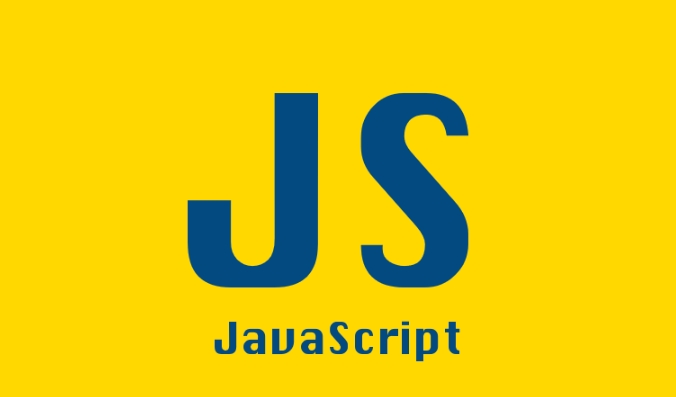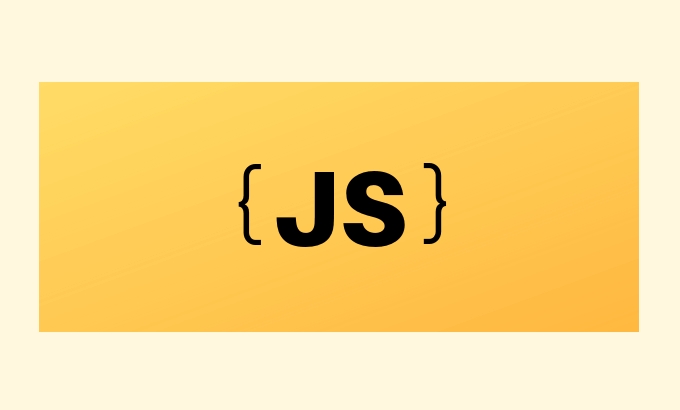 Web Front-end
Web Front-end
 JS Tutorial
JS Tutorial
 Real-Time JavaScript Applications with WebSockets and Integration with Java Messaging Queues
Real-Time JavaScript Applications with WebSockets and Integration with Java Messaging Queues
Real-Time JavaScript Applications with WebSockets and Integration with Java Messaging Queues
Jul 16, 2025 am 02:41 AMWebSocket is ideal for real-time communication because it supports two-way persistent connections, reducing HTTP request overhead. 1. WebSocket allows the server to actively push messages to improve efficiency; 2. The front-end simply accesses and listens to messages through the WebSocket API; 3. Java back-end such as Spring Boot can combine STOMP and ActiveMQ to integrate WebSocket with message queues; 4. Use @ServerEndpoint to create an endpoint and send messages to the queue through messagingTemplate; 5. The front-end uses SockJS and STOMP.js to subscribe to topics to receive broadcast messages; 6. Pay attention to configuring WebSocket support, cross-domain processing, unified JSON format and reconnection mechanism during deployment.

Real-time JavaScript applications are becoming more and more common in modern web development, such as chat applications, online collaboration tools, real-time notification systems, etc. To implement this type of functionality, WebSocket is a very suitable communication protocol, and if your backend is Java-based and uses message queues (such as ActiveMQ or RabbitMQ), integrating WebSocket and Java message queues is the key.

Let’s take a look at how to achieve this integration.
What is WebSocket and why is it suitable for real-time communication?
WebSocket is a protocol that establishes a persistent connection between the client and the server, allowing both parties to send data at any time, rather than the traditional request-response mode. This is very suitable for applications with high real-time requirements.

Compared with polling or long-polling, WebSocket reduces a large number of unnecessary HTTP requests and is more efficient in communication. For example, in a chat application, after the user sends a message, the server can immediately push the message to other users through WebSocket, without the need for the client to constantly "ask" whether there is any new message.
In terms of front-end, the browser natively supports WebSocket API, which is very simple to use:

const socket = new WebSocket('ws://yourserver.com/socket');
socket.onmessage = function(event) {
console.log('Received message:', event.data);
};How does the Java backend integrate WebSocket and message queue?
If your backend is Java, for example, using Spring Boot, you can create a WebSocket endpoint through the @ServerEndpoint annotation. But if you still want to forward the messages received by WebSocket to the message queue, you need to do further integration.
A common practice is to let the WebSocket endpoint receive the message and publish the message to the message queue. The advantage of this is to decouple the WebSocket layer and the business logic layer, and to utilize the reliability, persistence, broadcasting and other capabilities of message queues.
Take Spring Boot STOMP ActiveMQ as an example:
Enable WebSocket support:
@Configuration @EnableWebSocketMessageBroker public class WebSocketConfig implements WebSocketMessageBrokerConfigurer { @Override public void registerStompEndpoints(StompEndpointRegistry registry) { registry.addEndpoint("/ws").withSockJS(); } @Override public void configureMessageBroker(MessageBrokerRegistry registry) { registry.enableSimpleBroker("/topic"); registry.setApplicationDestinationPrefixes("/app"); } }Receive client messages and forward them to the message queue:
@Component public class MessageBroker { private final SimpMessagingTemplate messagingTemplate; public MessageBroker(SimpMessagingTemplate messagingTemplate) { this.messagingTemplate = messagingTemplate; } public void sendMessageToQueue(String destination, String message) { messagingTemplate.convertAndSend(destination, message); } }The WebSocket controller receives messages and calls the message queue:
@Controller public class WebSocketController { private final MessageBroker messageBroker; public WebSocketController(MessageBroker messageBroker) { this.messageBroker = messageBroker; } @MessageMapping("/chat") public void sendChatMessage(String message) { messageBroker.sendMessageToQueue("/topic/messages", message); } }
In this way, messages sent by the front-end through WebSocket will be processed by the back-end and broadcast to all clients subscribed to /topic/messages .
How to cooperate with the front and back ends to realize message broadcast?
The key to front-end cooperation lies in the subscription and broadcast mechanism of messages.
The front-end uses SockJS STOMP.js to easily subscribe to specific topics:
const socket = new SockJS('/ws');
const stompClient = Stomp.over(socket);
stompClient.connect({}, function () {
stompClient.subscribe('/topic/messages', function (message) {
console.log('Received broadcast message:', message.body);
});
stompClient.send("/app/chat", {}, JSON.stringify({ 'message': 'Hello!' }));
}); After receiving the /app/chat message, the backend broadcasts the message to all clients subscribed to /topic/messages through convertAndSend() method.
This mode is very suitable for chat rooms, notification systems and other scenarios where messages need to be broadcasted.
A few details to pay attention to
- WebSocket and HTTP are different protocols . When deploying, please pay attention to whether the server supports the WebSocket protocol (such as Nginx requires configuration of upgrade headers).
- Cross-domain issues : You may encounter cross-domain issues when connecting to WebSockets in the front-end. Spring provides methods such as
setAllowedOrigin("*")to configure. - Message format : It is recommended to use JSON format to pass data uniformly to facilitate front-end parsing.
- Connection keeping and reconnection mechanism : The front-end can listen to the
oncloseevent of WebSocket and automatically try to reconnect.
Integrating WebSocket and Java message queues is not complicated, but it is necessary to pay attention to the coordination between the front and back ends and message flow mechanisms. As long as you design the routing and broadcast logic for good news, a stable and efficient real-time communication system can be realized.
Basically that's it.
The above is the detailed content of Real-Time JavaScript Applications with WebSockets and Integration with Java Messaging Queues. For more information, please follow other related articles on the PHP Chinese website!

Hot AI Tools

Undress AI Tool
Undress images for free

Undresser.AI Undress
AI-powered app for creating realistic nude photos

AI Clothes Remover
Online AI tool for removing clothes from photos.

Clothoff.io
AI clothes remover

Video Face Swap
Swap faces in any video effortlessly with our completely free AI face swap tool!

Hot Article

Hot Tools

Notepad++7.3.1
Easy-to-use and free code editor

SublimeText3 Chinese version
Chinese version, very easy to use

Zend Studio 13.0.1
Powerful PHP integrated development environment

Dreamweaver CS6
Visual web development tools

SublimeText3 Mac version
God-level code editing software (SublimeText3)

Hot Topics
 Java vs. JavaScript: Clearing Up the Confusion
Jun 20, 2025 am 12:27 AM
Java vs. JavaScript: Clearing Up the Confusion
Jun 20, 2025 am 12:27 AM
Java and JavaScript are different programming languages, each suitable for different application scenarios. Java is used for large enterprise and mobile application development, while JavaScript is mainly used for web page development.
 How to work with dates and times in js?
Jul 01, 2025 am 01:27 AM
How to work with dates and times in js?
Jul 01, 2025 am 01:27 AM
The following points should be noted when processing dates and time in JavaScript: 1. There are many ways to create Date objects. It is recommended to use ISO format strings to ensure compatibility; 2. Get and set time information can be obtained and set methods, and note that the month starts from 0; 3. Manually formatting dates requires strings, and third-party libraries can also be used; 4. It is recommended to use libraries that support time zones, such as Luxon. Mastering these key points can effectively avoid common mistakes.
 Why should you place tags at the bottom of the ?
Jul 02, 2025 am 01:22 AM
Why should you place tags at the bottom of the ?
Jul 02, 2025 am 01:22 AM
PlacingtagsatthebottomofablogpostorwebpageservespracticalpurposesforSEO,userexperience,anddesign.1.IthelpswithSEObyallowingsearchenginestoaccesskeyword-relevanttagswithoutclutteringthemaincontent.2.Itimprovesuserexperiencebykeepingthefocusonthearticl
 JavaScript vs. Java: A Comprehensive Comparison for Developers
Jun 20, 2025 am 12:21 AM
JavaScript vs. Java: A Comprehensive Comparison for Developers
Jun 20, 2025 am 12:21 AM
JavaScriptispreferredforwebdevelopment,whileJavaisbetterforlarge-scalebackendsystemsandAndroidapps.1)JavaScriptexcelsincreatinginteractivewebexperienceswithitsdynamicnatureandDOMmanipulation.2)Javaoffersstrongtypingandobject-orientedfeatures,idealfor
 What is event bubbling and capturing in the DOM?
Jul 02, 2025 am 01:19 AM
What is event bubbling and capturing in the DOM?
Jul 02, 2025 am 01:19 AM
Event capture and bubble are two stages of event propagation in DOM. Capture is from the top layer to the target element, and bubble is from the target element to the top layer. 1. Event capture is implemented by setting the useCapture parameter of addEventListener to true; 2. Event bubble is the default behavior, useCapture is set to false or omitted; 3. Event propagation can be used to prevent event propagation; 4. Event bubbling supports event delegation to improve dynamic content processing efficiency; 5. Capture can be used to intercept events in advance, such as logging or error processing. Understanding these two phases helps to accurately control the timing and how JavaScript responds to user operations.
 JavaScript: Exploring Data Types for Efficient Coding
Jun 20, 2025 am 12:46 AM
JavaScript: Exploring Data Types for Efficient Coding
Jun 20, 2025 am 12:46 AM
JavaScripthassevenfundamentaldatatypes:number,string,boolean,undefined,null,object,andsymbol.1)Numbersuseadouble-precisionformat,usefulforwidevaluerangesbutbecautiouswithfloating-pointarithmetic.2)Stringsareimmutable,useefficientconcatenationmethodsf
 How can you reduce the payload size of a JavaScript application?
Jun 26, 2025 am 12:54 AM
How can you reduce the payload size of a JavaScript application?
Jun 26, 2025 am 12:54 AM
If JavaScript applications load slowly and have poor performance, the problem is that the payload is too large. Solutions include: 1. Use code splitting (CodeSplitting), split the large bundle into multiple small files through React.lazy() or build tools, and load it as needed to reduce the first download; 2. Remove unused code (TreeShaking), use the ES6 module mechanism to clear "dead code" to ensure that the introduced libraries support this feature; 3. Compress and merge resource files, enable Gzip/Brotli and Terser to compress JS, reasonably merge files and optimize static resources; 4. Replace heavy-duty dependencies and choose lightweight libraries such as day.js and fetch
 A definitive JS roundup on JavaScript modules: ES Modules vs CommonJS
Jul 02, 2025 am 01:28 AM
A definitive JS roundup on JavaScript modules: ES Modules vs CommonJS
Jul 02, 2025 am 01:28 AM
The main difference between ES module and CommonJS is the loading method and usage scenario. 1.CommonJS is synchronously loaded, suitable for Node.js server-side environment; 2.ES module is asynchronously loaded, suitable for network environments such as browsers; 3. Syntax, ES module uses import/export and must be located in the top-level scope, while CommonJS uses require/module.exports, which can be called dynamically at runtime; 4.CommonJS is widely used in old versions of Node.js and libraries that rely on it such as Express, while ES modules are suitable for modern front-end frameworks and Node.jsv14; 5. Although it can be mixed, it can easily cause problems.





